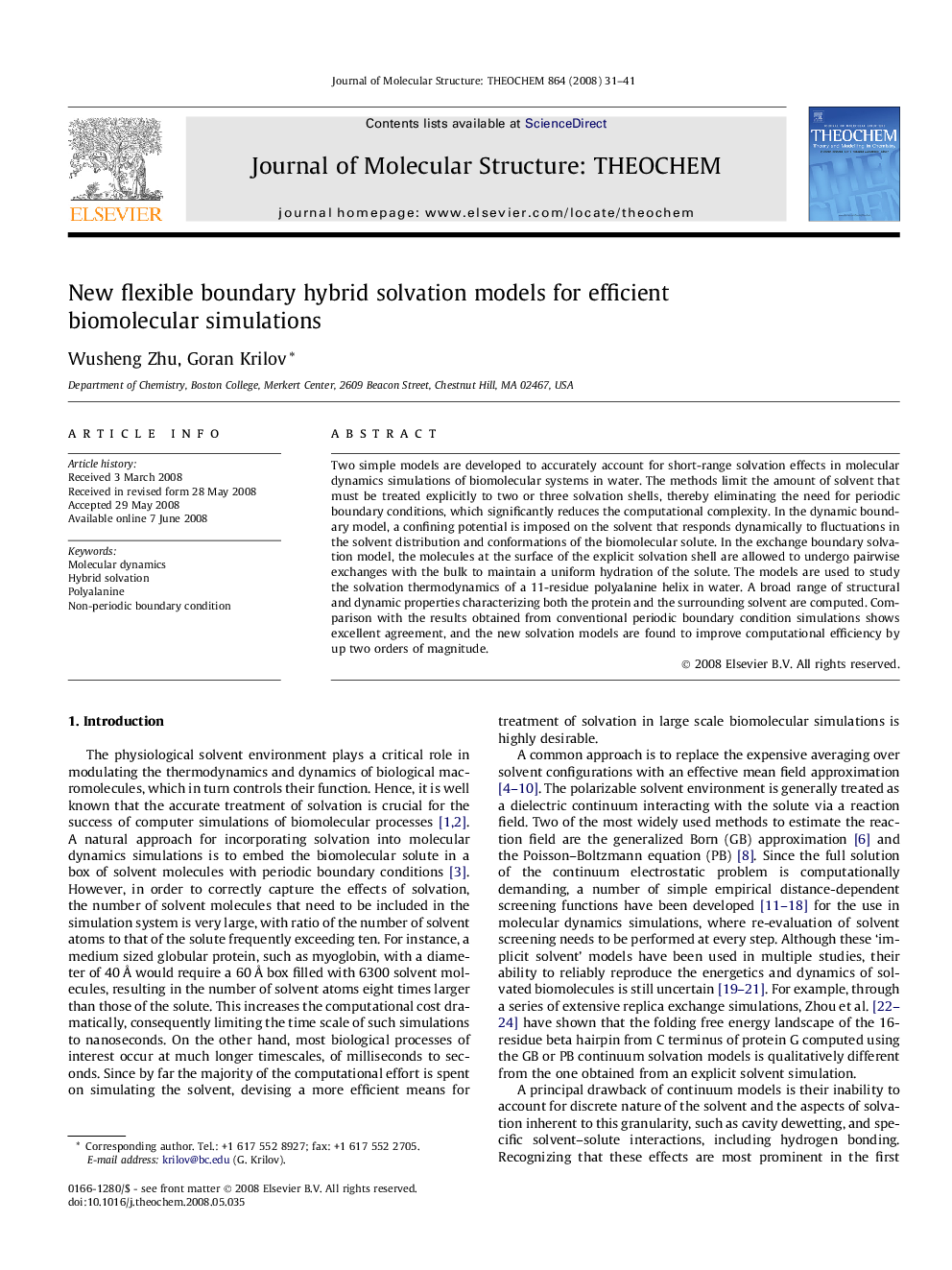| Article ID | Journal | Published Year | Pages | File Type |
|---|---|---|---|---|
| 5417723 | Journal of Molecular Structure: THEOCHEM | 2008 | 11 Pages |
Abstract
Two simple models are developed to accurately account for short-range solvation effects in molecular dynamics simulations of biomolecular systems in water. The methods limit the amount of solvent that must be treated explicitly to two or three solvation shells, thereby eliminating the need for periodic boundary conditions, which significantly reduces the computational complexity. In the dynamic boundary model, a confining potential is imposed on the solvent that responds dynamically to fluctuations in the solvent distribution and conformations of the biomolecular solute. In the exchange boundary solvation model, the molecules at the surface of the explicit solvation shell are allowed to undergo pairwise exchanges with the bulk to maintain a uniform hydration of the solute. The models are used to study the solvation thermodynamics of a 11-residue polyalanine helix in water. A broad range of structural and dynamic properties characterizing both the protein and the surrounding solvent are computed. Comparison with the results obtained from conventional periodic boundary condition simulations shows excellent agreement, and the new solvation models are found to improve computational efficiency by up two orders of magnitude.
Keywords
Related Topics
Physical Sciences and Engineering
Chemistry
Physical and Theoretical Chemistry
Authors
Wusheng Zhu, Goran Krilov,
